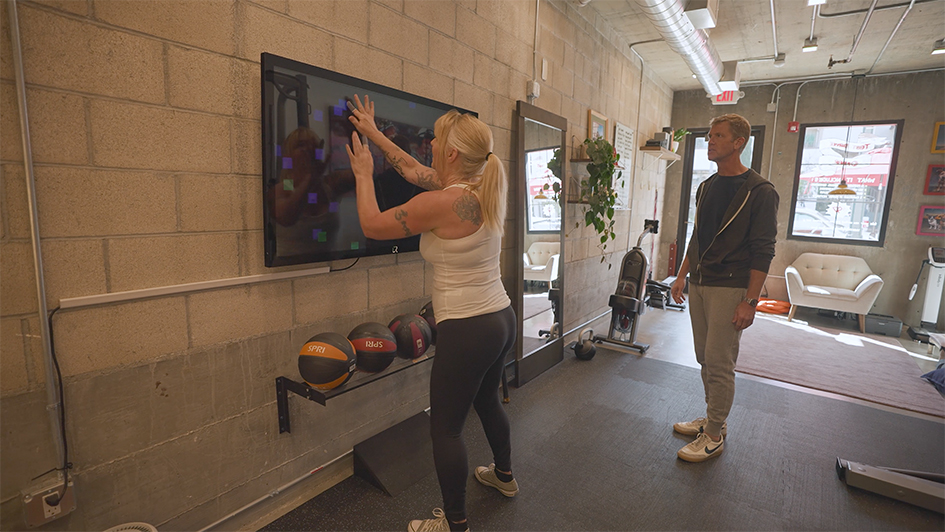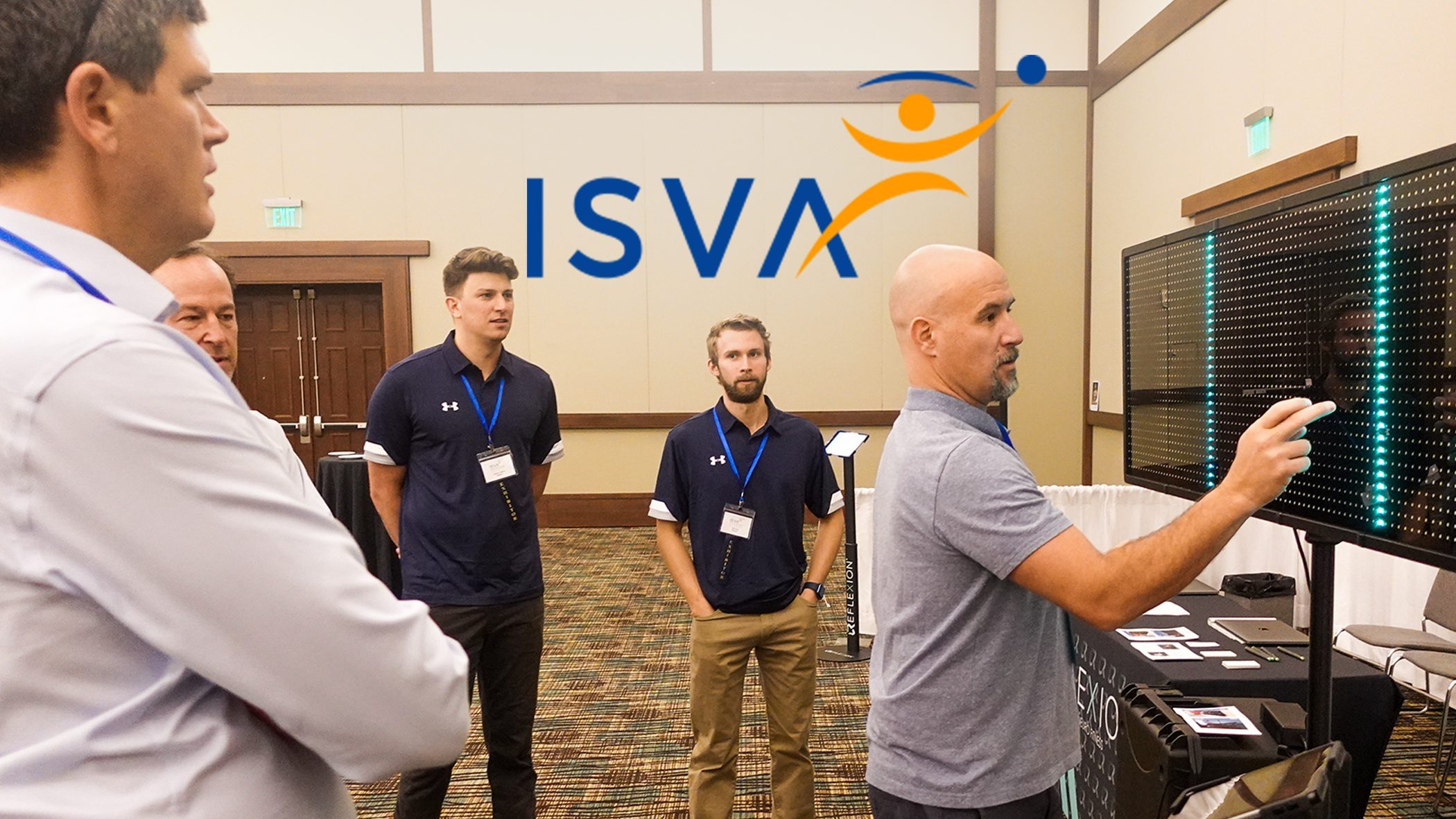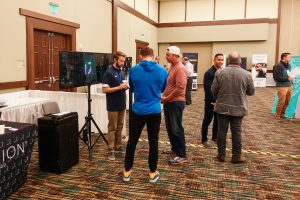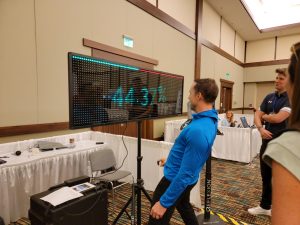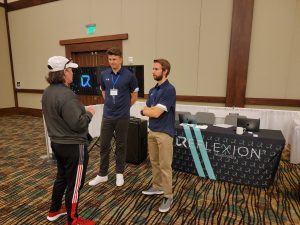Police, Fire, & Military personnel are required to make quick decisions in stressful, often physically challenging situations. So are elite athletes.
Acquiring skills, recalling training, maintaining a high degree of readiness and keeping your composure are requirements for success in both tactical & athletic performance.
To ensure peak performance, athletes consistently train to improve their reaction time, peripheral awareness, eye/hand coordination and focus. The end result being improved information processing speed and the ability to make accurate decisions under pressure.
QUICK AND ACCURATE DECISIONS
Barbara Schwartz wrote an excellent piece on this exact topic, paralleling the decisions you make everyday and decisions Indycar racers make.
…“in a car traveling 220 miles per hour while moving hands and feet, trying to read and comprehend displays, making steering wheel inputs, and dealing with an elevated heart rate, an activated fight or flight nervous system, and extreme environmental conditions like heat and humidity”.
Aside from the fact this all takes place in a car at 220mph, it sounds like a scenario you are familiar with.
READ MORE on that article from Calibre Press.
READINESS
Human factors, like fatigue, stress, diet and sleep affect everyone’s cognitive abilities.
Utilizing technology, like Reflexion, is one way to track scores over time in order to both show progress, as well as determine readiness.
Let’s say an athlete tests 22% below their average. A quick conversation can determine if that athlete needs to have a longer warmup, or if they need to be held out of practice.
Monitoring readiness can prevent you from sending someone into a situation where they could harm themself or others.
IMPROVED LEARNING AND RETENTION
The brain has a natural ability to change, adapt, and even reorganize itself to function differently as a result of learning and experience.
Neuro training can strengthen these new neural pathways to accelerate learning & retain information as it’s being learned.
Air Force pilots use neuro training to master a new flight simulator quickly, while West Point athletes utilize neuro training to “become comfortable” performing when fatigued & distracted.
Soccer players use neuro training to improve peripheral vision to assess the ENTIRE situation and make decisions while in pursuit.
See How Reflexion Increases Shooting Accuracy.
REDUCED RISK THROUGH IMPROVED PERFORMANCE
Baseball hitters with high reaction time scores swing at fewer pitches and have a higher batting average, while also making fewer errors. They take fewer actions, and when they do act, it is correct.
In the words of MLB Opthalmalogist, Dr. Dan Laby (sportsvision.nyc), “an athlete with faster reaction time has the ability to wait longer before taking an action, thus having more visual information to make the correct decision”.
The brain processing information rapidly “slows the game down”, allowing athletes to stay calm, recall training, and reduce both rate & severity of errors.
TECHNOLOGY NOT REQUIRED
Reflexion is in the business of “bringing neuro training to the masses” and believes everyone should include neuro training in their program.
In addition to the no-tech training suggestions offered in Barbara Schwartz’s article, Reflexion created a video series showcasing strategies to incorporate neuro training with everyday items.
Click Here if you’re interested in videos showing low-tech solutions for neuro training using just a few simple items.

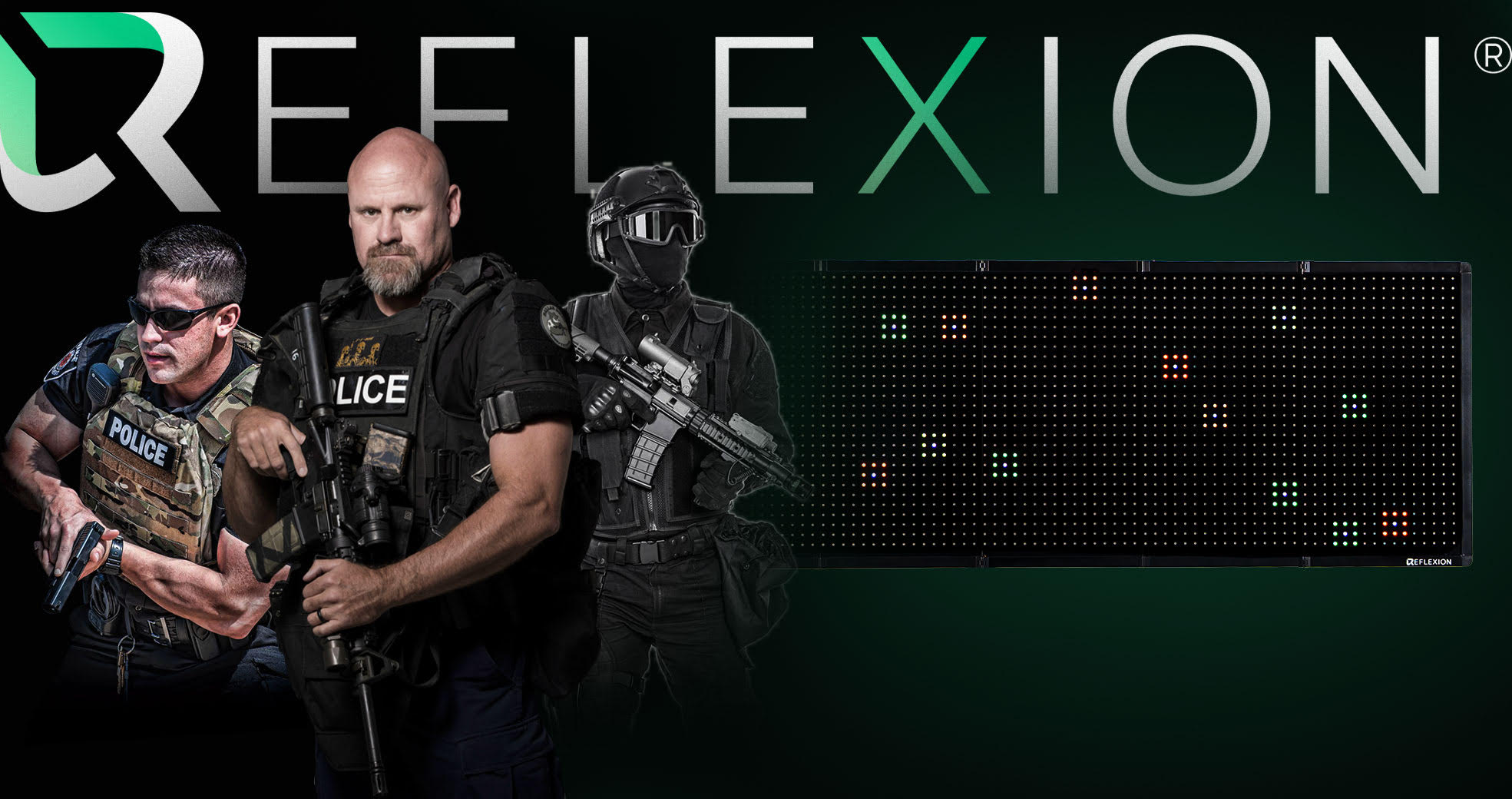
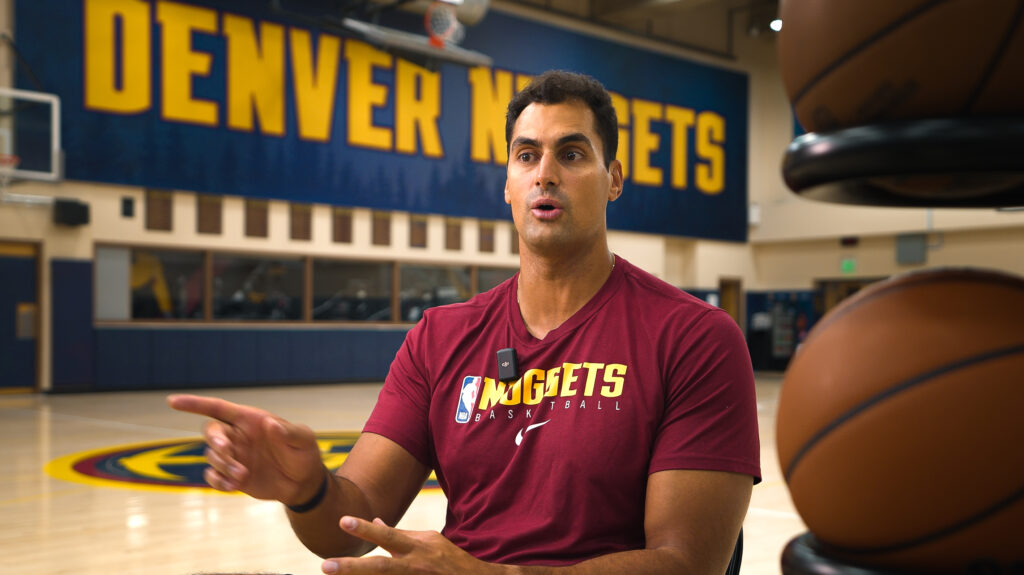
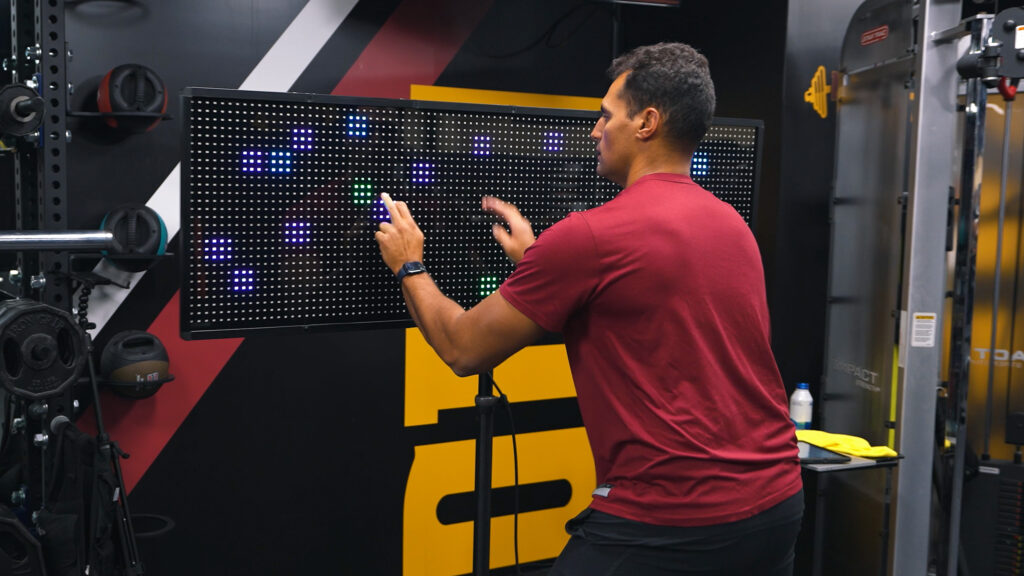
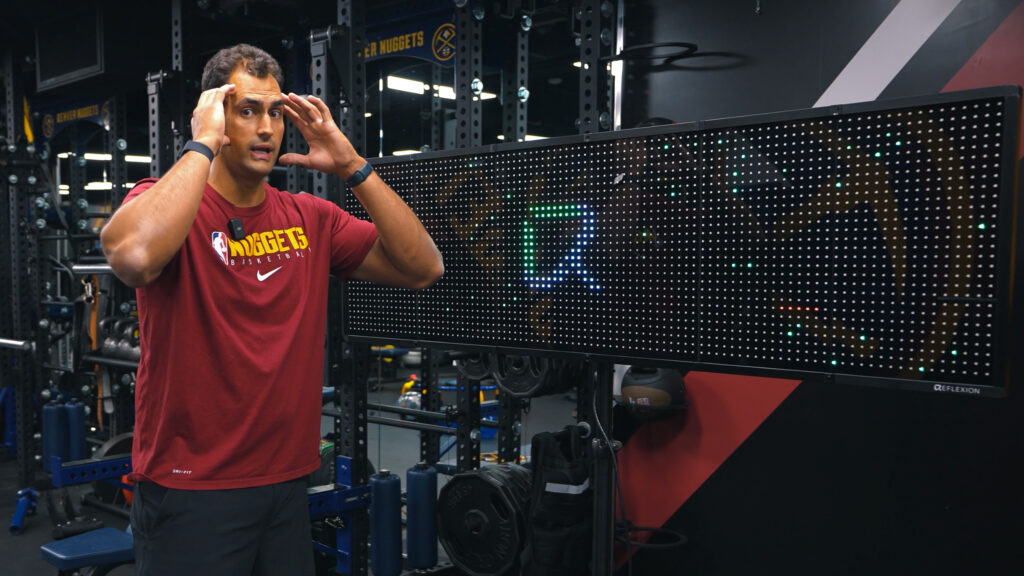
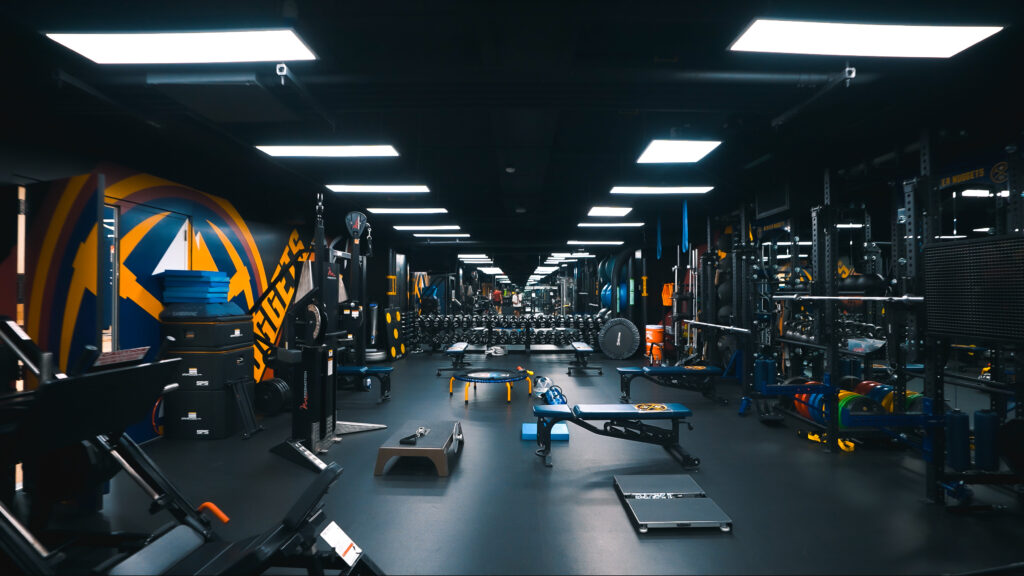
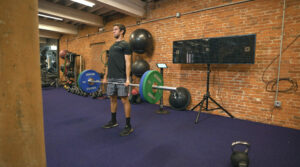
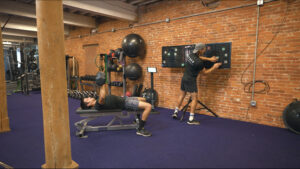 Whether you play a sport or not, neuro training provides an outlet for the brain to improve upon its clarity and sharpness during times of elevated fatigue – something that’s hard to replicate in any other training setting. With a wide array of mind-flexing drills and challenges, it’s easy to create a protocol with the EDGE that compliments your physical workout.
Whether you play a sport or not, neuro training provides an outlet for the brain to improve upon its clarity and sharpness during times of elevated fatigue – something that’s hard to replicate in any other training setting. With a wide array of mind-flexing drills and challenges, it’s easy to create a protocol with the EDGE that compliments your physical workout.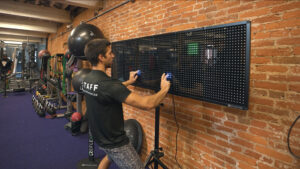 The long and short of it is:
The long and short of it is:
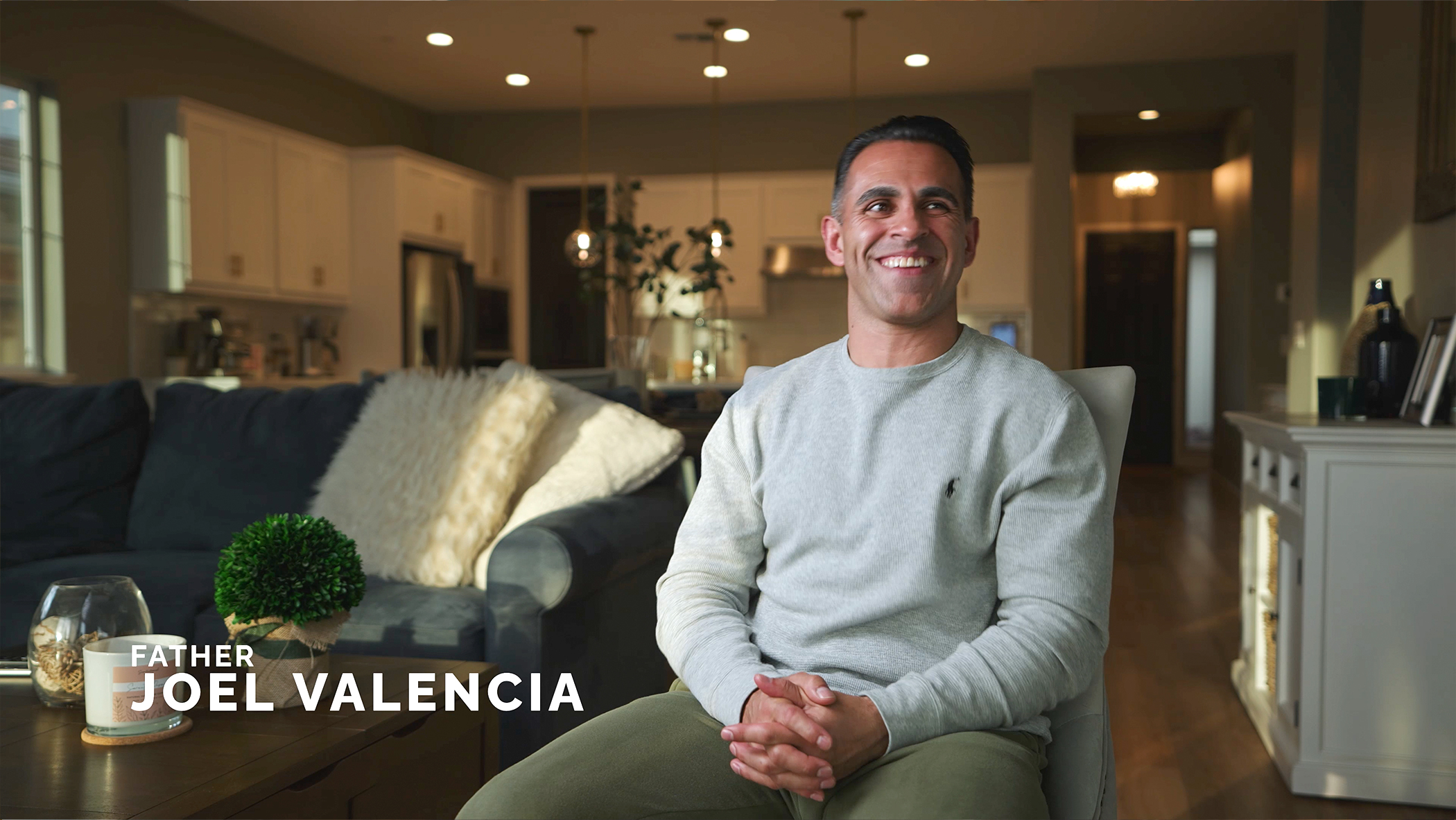 We caught up with Joel Valencia at his home to discuss his approach to parenting and training the two elite athletes in his family. Aden and Nyla both won titles in the U.S.A. Wrestling High School National Showcase in March 2021. This led directly to invitations to serve as warmup partners to competitors who were vying for their own spots in the Tokyo Olympic Games. Nyla is a two-time national champion and a silver medalist at the Pan American Games, while Aden is a U15 world champion in Greco-Roman and freestyle wrestling. Joel serves as one of their trainers and has put the neuro-training capabilities of the Edge to work in helping both young athletes to achieve their full potential.
We caught up with Joel Valencia at his home to discuss his approach to parenting and training the two elite athletes in his family. Aden and Nyla both won titles in the U.S.A. Wrestling High School National Showcase in March 2021. This led directly to invitations to serve as warmup partners to competitors who were vying for their own spots in the Tokyo Olympic Games. Nyla is a two-time national champion and a silver medalist at the Pan American Games, while Aden is a U15 world champion in Greco-Roman and freestyle wrestling. Joel serves as one of their trainers and has put the neuro-training capabilities of the Edge to work in helping both young athletes to achieve their full potential. Wrestling requires both physical strength and cognitive skills to reach the highest levels of competition. Joel explained that, along with the strength training and other physical conditioning equipment available to Nyla and Aden, the Reflexion Edge provides the reaction training necessary to respond quickly during wrestling competitions. By using the Edge in the home training setting, both Aden and Nyla can improve their reaction times while enhancing their hand-eye coordination and their cognitive skills. Joel and the Valencia siblings both attribute a portion of their success to their neuro-training regimen with the Reflexion Edge.
Wrestling requires both physical strength and cognitive skills to reach the highest levels of competition. Joel explained that, along with the strength training and other physical conditioning equipment available to Nyla and Aden, the Reflexion Edge provides the reaction training necessary to respond quickly during wrestling competitions. By using the Edge in the home training setting, both Aden and Nyla can improve their reaction times while enhancing their hand-eye coordination and their cognitive skills. Joel and the Valencia siblings both attribute a portion of their success to their neuro-training regimen with the Reflexion Edge.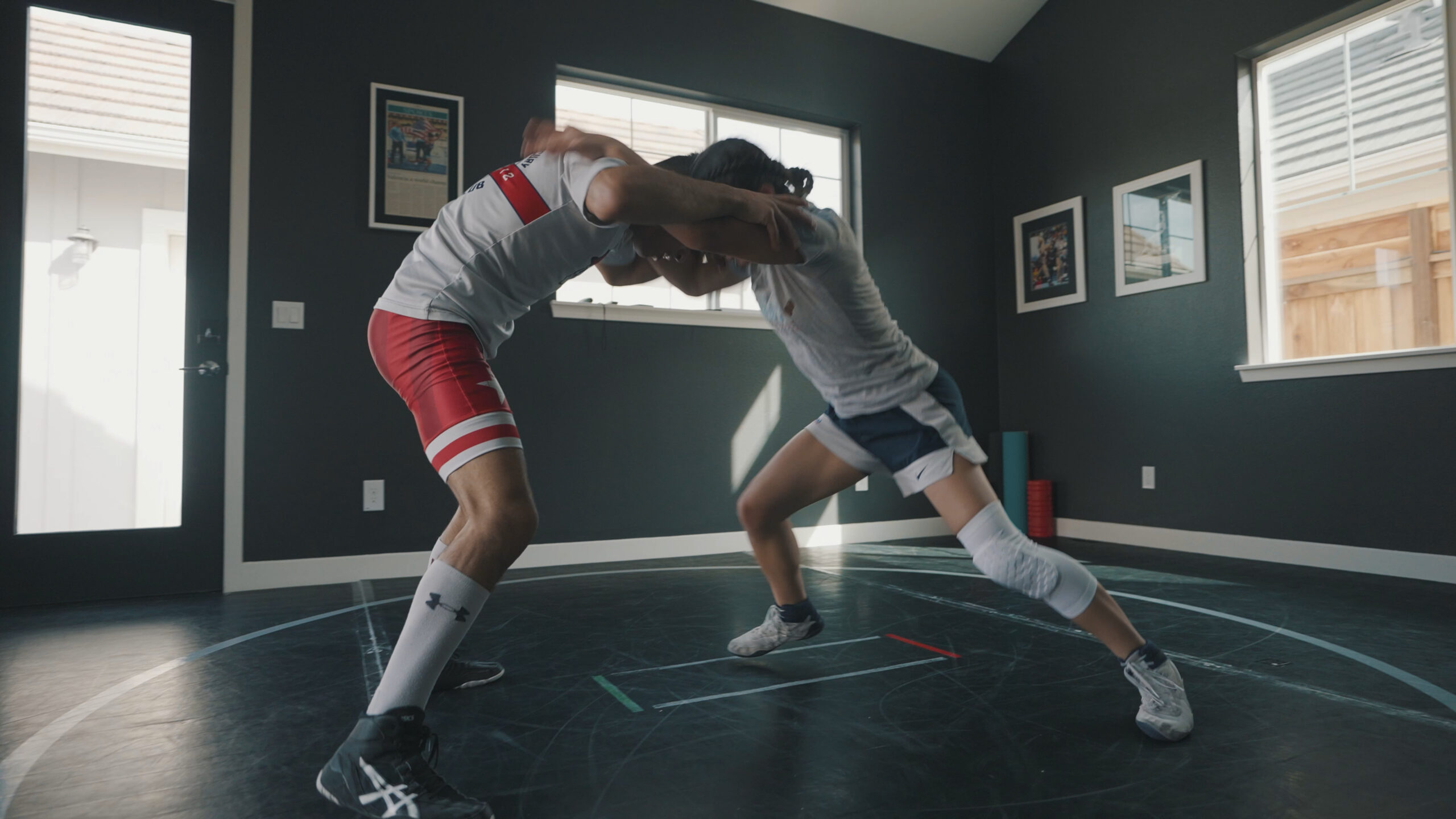 At Reflexion, we are pleased to contribute to the success of Nyla and Aden Valencia in the wrestling field. We offer advanced neuro-training solutions that include the Edge and the Flex. These systems can help athletes achieve the best performance and are ideally suited for building cognitive strength during the physical training process.
At Reflexion, we are pleased to contribute to the success of Nyla and Aden Valencia in the wrestling field. We offer advanced neuro-training solutions that include the Edge and the Flex. These systems can help athletes achieve the best performance and are ideally suited for building cognitive strength during the physical training process.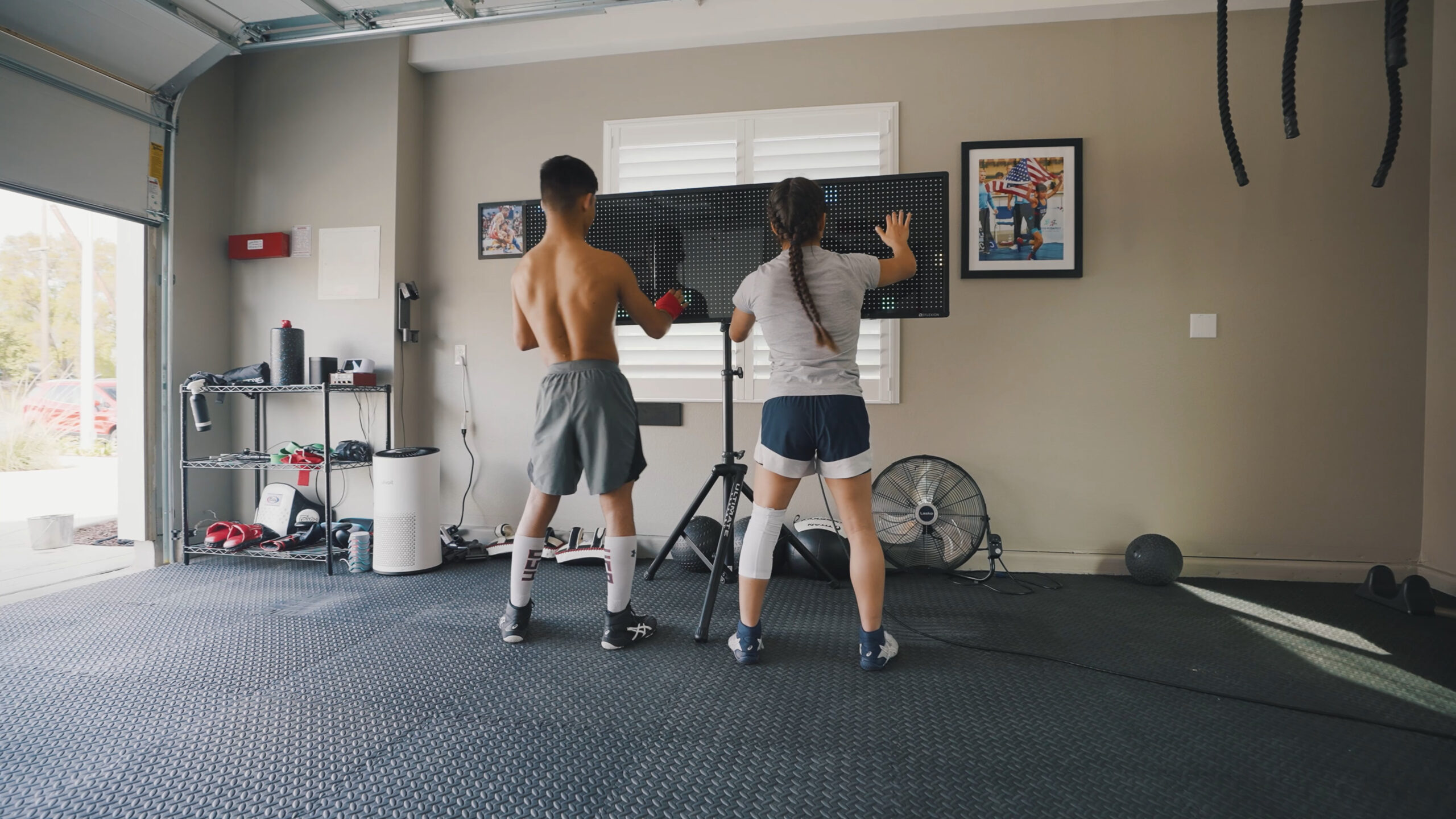
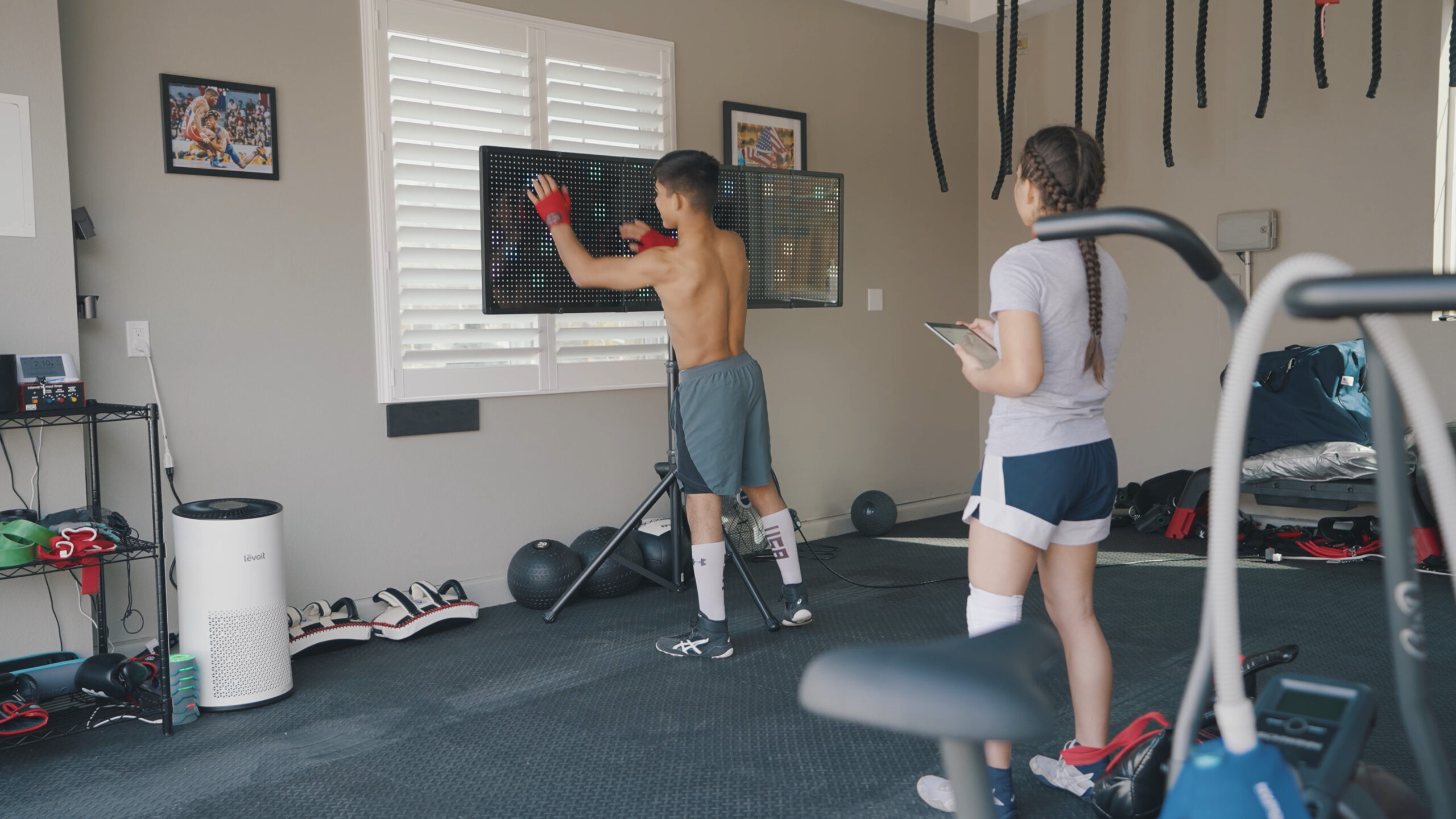 To learn more about how Reflexion can make great athletes even better,
To learn more about how Reflexion can make great athletes even better, 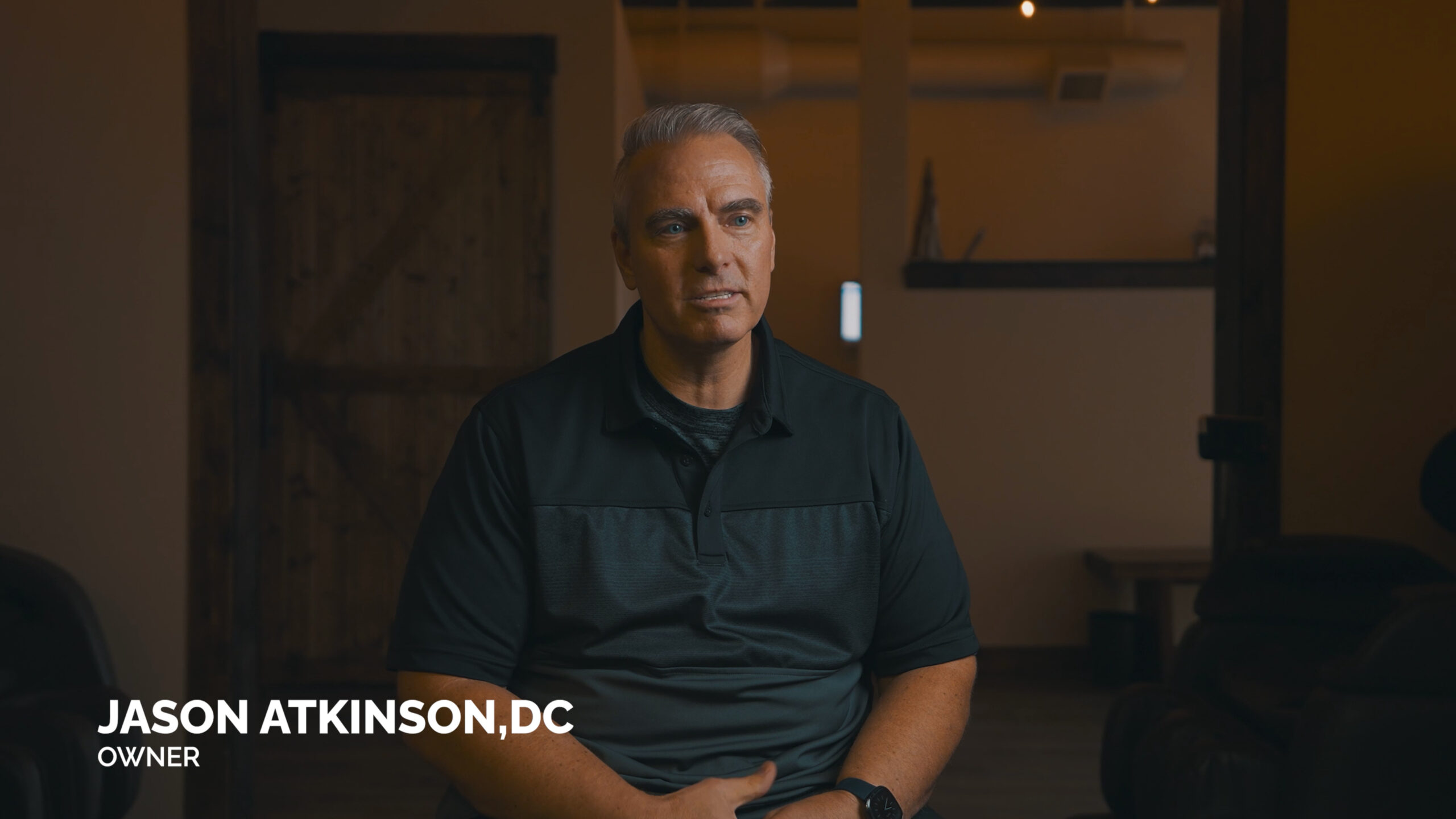 Life Long Wellness takes a holistic approach to wellness and physical health. With two of our Flex systems and an Edge system in place for clients, the team at Life Long Wellness can create real synergy by combining acupuncture, massage, chiropractic treatments, and nutritional services with the neuro-training made possible by Reflexion systems. This can allow patients of Life Long Wellness to enjoy the benefits of holistic care in a professional setting.
Life Long Wellness takes a holistic approach to wellness and physical health. With two of our Flex systems and an Edge system in place for clients, the team at Life Long Wellness can create real synergy by combining acupuncture, massage, chiropractic treatments, and nutritional services with the neuro-training made possible by Reflexion systems. This can allow patients of Life Long Wellness to enjoy the benefits of holistic care in a professional setting.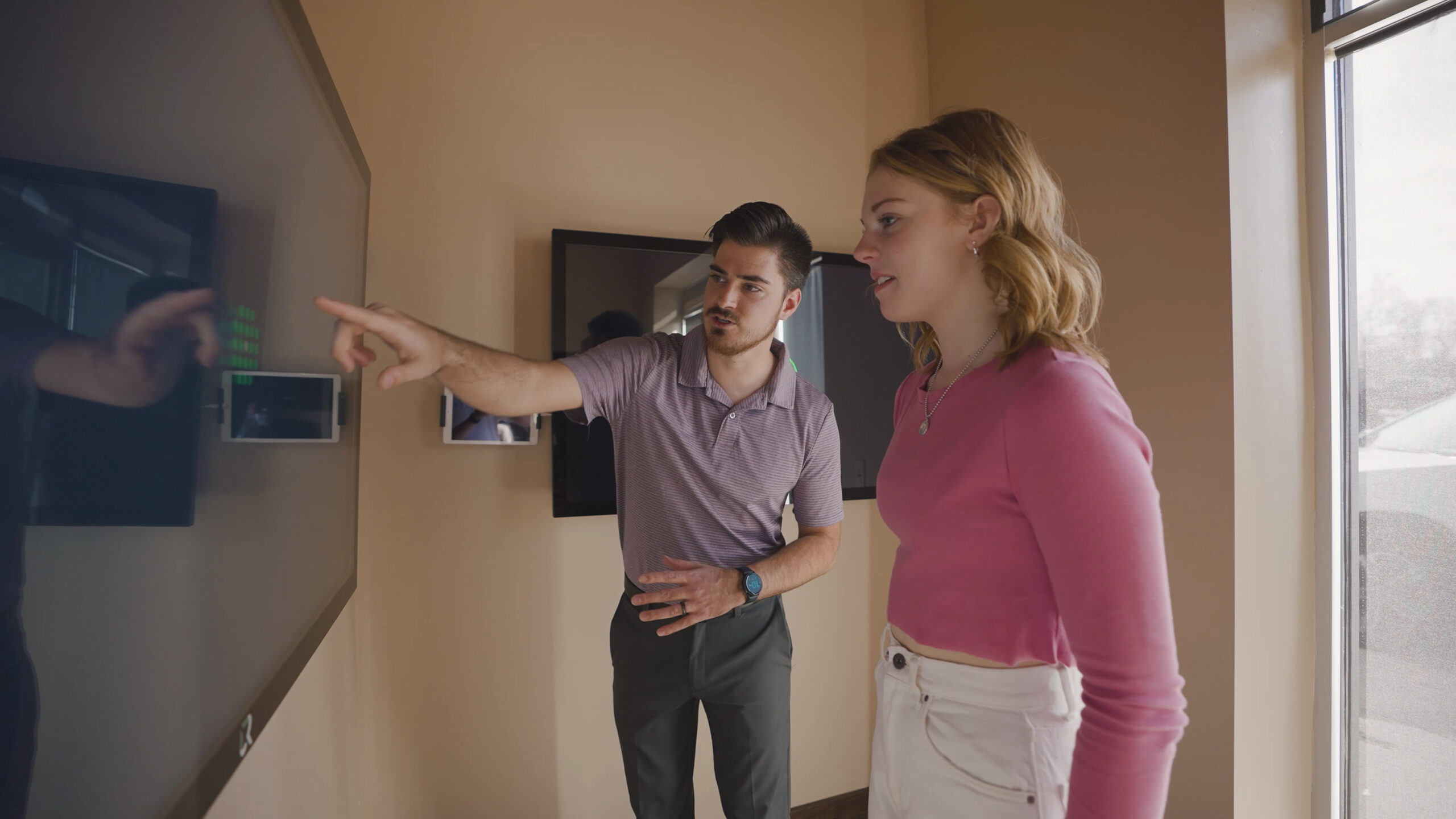 Life Long Wellness incorporates technological solutions like the Flex and Edge systems alongside the ancient and proven techniques of acupuncture, chiropractic and massage therapies. The facility is located just 15 minutes north of Salt Lake City in Kaysville, Utah, and is owned and operated by Dr. Jason Atkinson, a licensed chiropractic physician, and board-certified acupuncturist. Life Long Wellness caters to the extreme sports enthusiast as well as everyday individuals seeking help in maintaining fitness and wellness.
Life Long Wellness incorporates technological solutions like the Flex and Edge systems alongside the ancient and proven techniques of acupuncture, chiropractic and massage therapies. The facility is located just 15 minutes north of Salt Lake City in Kaysville, Utah, and is owned and operated by Dr. Jason Atkinson, a licensed chiropractic physician, and board-certified acupuncturist. Life Long Wellness caters to the extreme sports enthusiast as well as everyday individuals seeking help in maintaining fitness and wellness.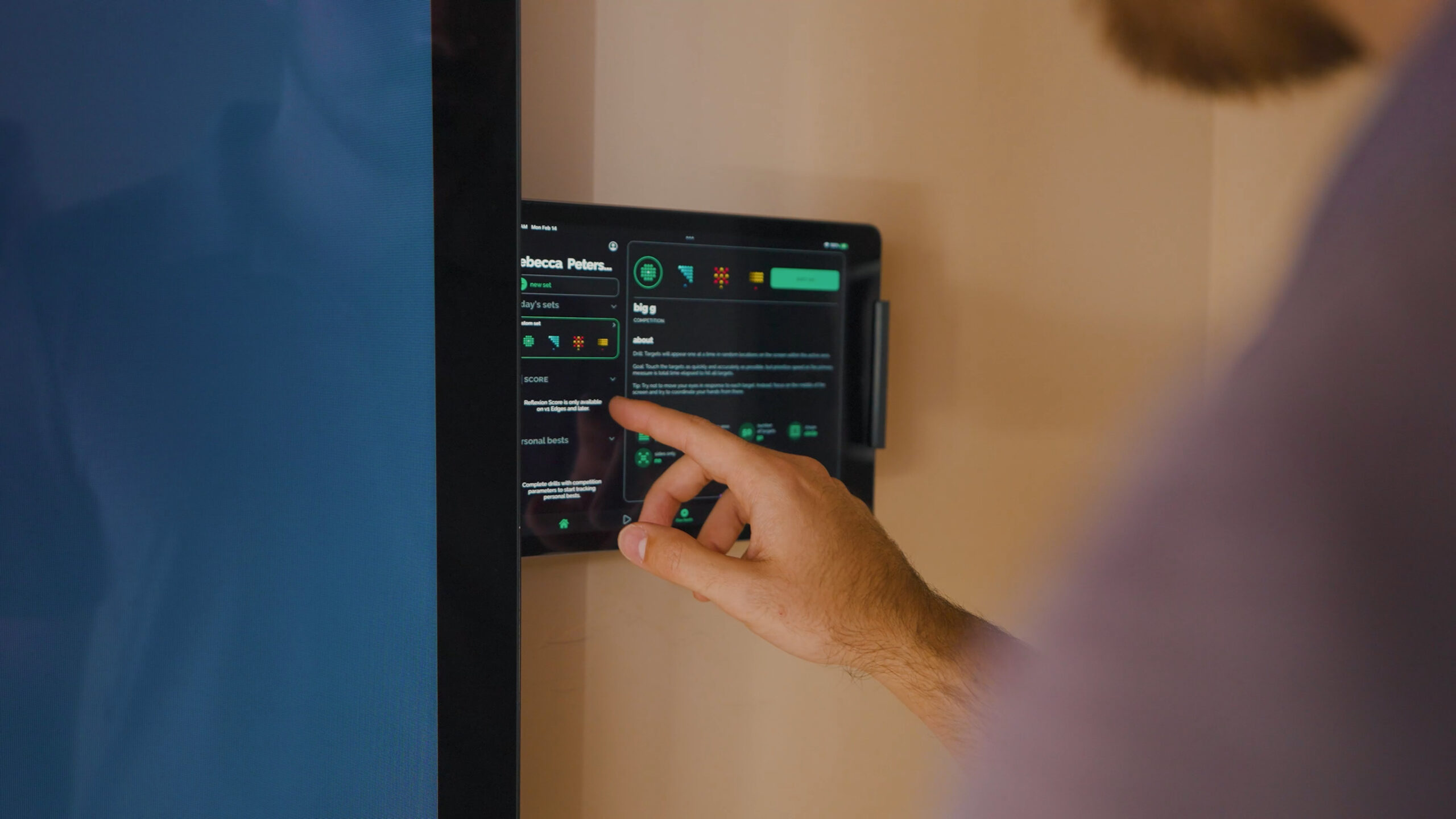 Many of the patients at Life Long Wellness are looking for an integrated solution that treats both the mind and the body. The Reflexion systems in place at the facility are used to augment chiropractic and acupuncture treatments to assist in faster healing and to improve the cognitive skills that contribute to physical healing. In particular, the Flex system by Reflexion is used by staff members to assess cognitive skills of new patients. This allows Life Long Wellness to tailor a treatment and fitness plan specifically for each patient they see. By engaging the mind with Flex and Edge, the team at Life Long Wellness can boost the power of the human brain and central nervous system to promote the body’s own ability to heal itself.
Many of the patients at Life Long Wellness are looking for an integrated solution that treats both the mind and the body. The Reflexion systems in place at the facility are used to augment chiropractic and acupuncture treatments to assist in faster healing and to improve the cognitive skills that contribute to physical healing. In particular, the Flex system by Reflexion is used by staff members to assess cognitive skills of new patients. This allows Life Long Wellness to tailor a treatment and fitness plan specifically for each patient they see. By engaging the mind with Flex and Edge, the team at Life Long Wellness can boost the power of the human brain and central nervous system to promote the body’s own ability to heal itself.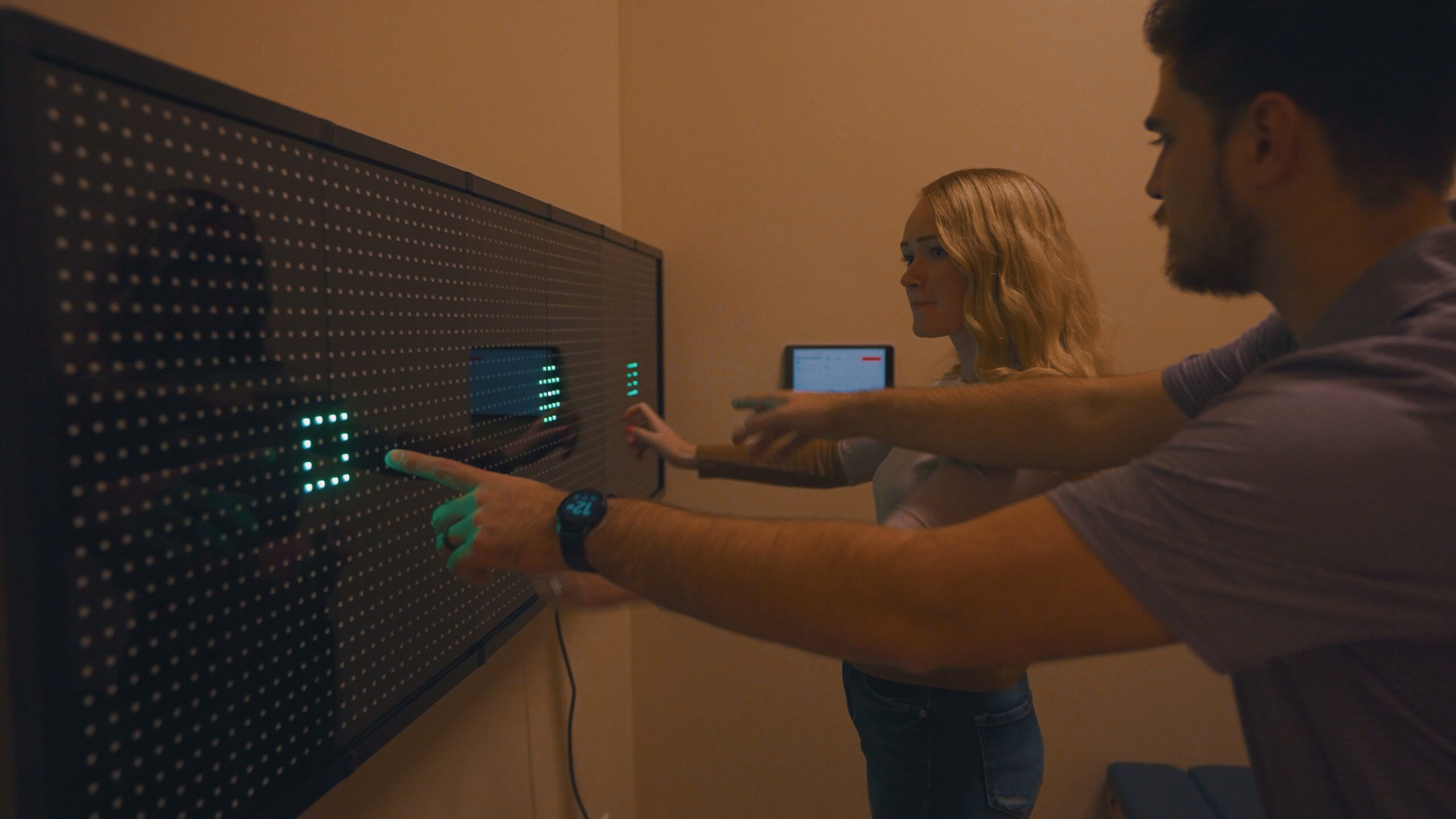 Reflexion specializes in providing technologically advanced neuro-training equipment that can help health care providers and fitness trainers to engage their clients more fully. To learn more about the Reflexion Edge or Flex systems, contact us today at 402-525-3789. You can also reach us by email at
Reflexion specializes in providing technologically advanced neuro-training equipment that can help health care providers and fitness trainers to engage their clients more fully. To learn more about the Reflexion Edge or Flex systems, contact us today at 402-525-3789. You can also reach us by email at 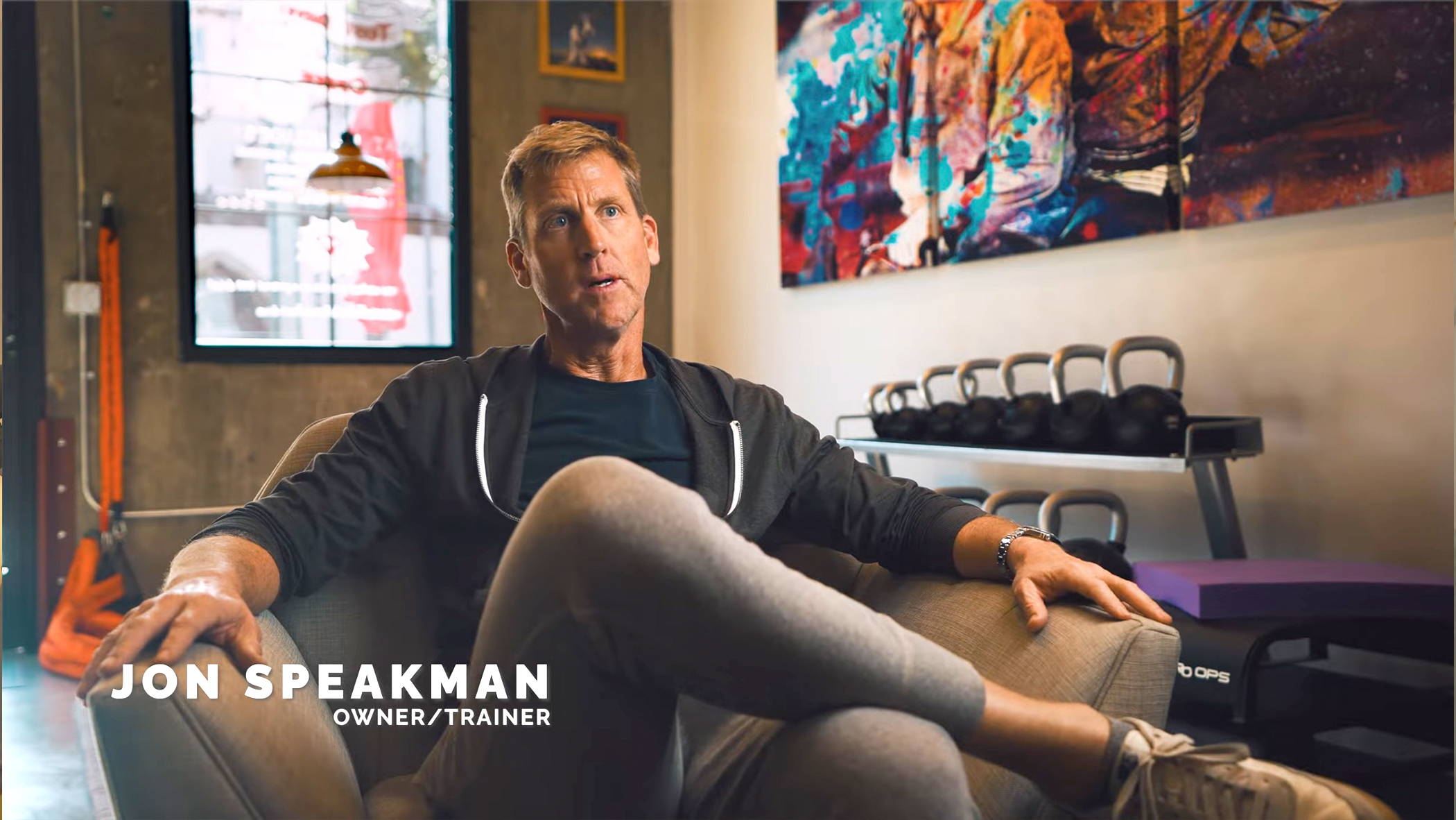
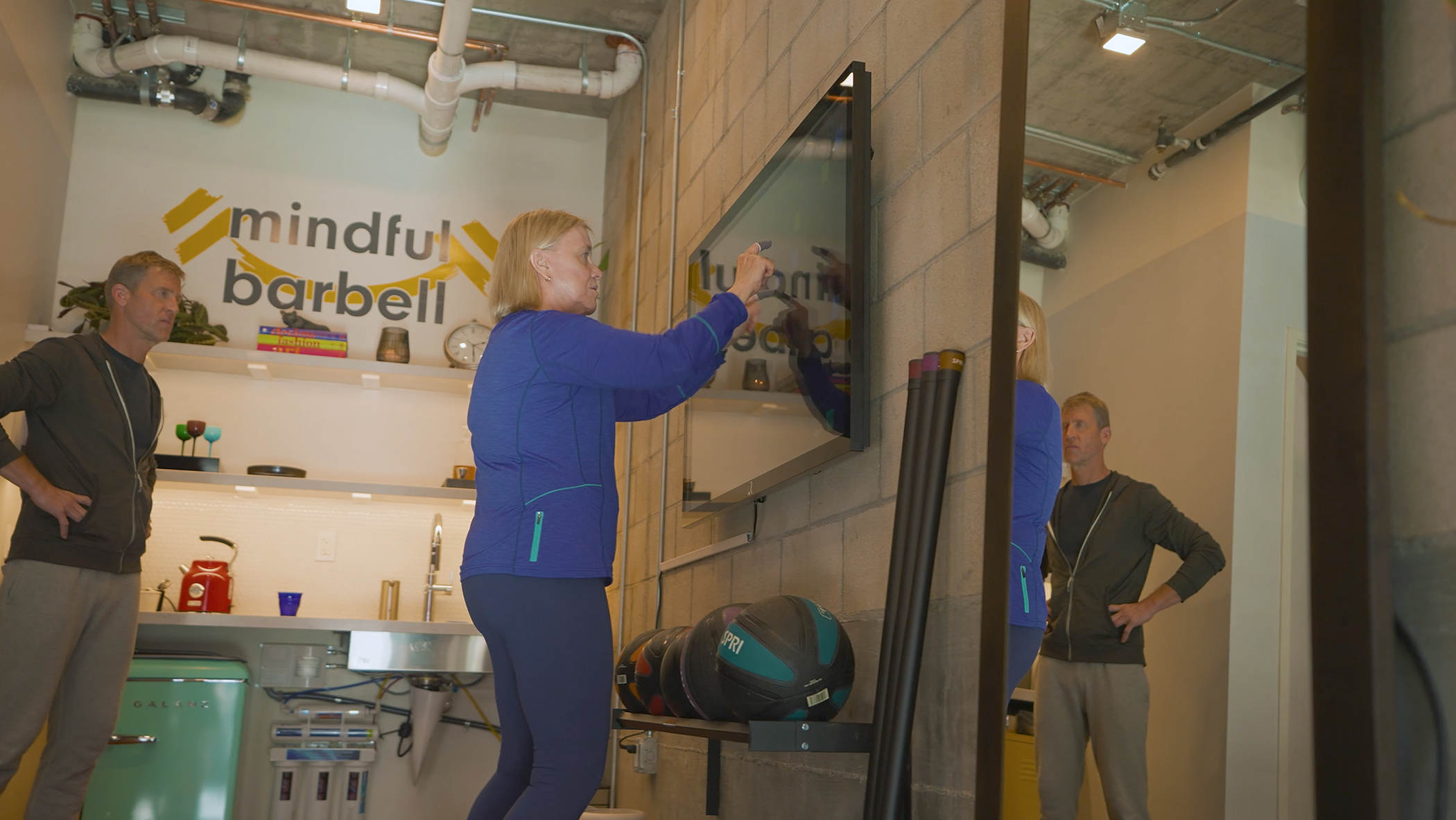 The integration of mind and body into the training process can make a big difference in the results achieved by older adults. The drills included with the Flex system are designed specifically to improve skills necessary for outstanding achievement in the athletic field. Jon uses Reflexion’s neuro-training systems to help clients in the prime of their lives to stop thinking consciously and start reacting, which can allow them to build cognitive strength at the same time they are improving their physical strength. The Flex can help older adults to maintain their cognitive health while staying active and fit.
The integration of mind and body into the training process can make a big difference in the results achieved by older adults. The drills included with the Flex system are designed specifically to improve skills necessary for outstanding achievement in the athletic field. Jon uses Reflexion’s neuro-training systems to help clients in the prime of their lives to stop thinking consciously and start reacting, which can allow them to build cognitive strength at the same time they are improving their physical strength. The Flex can help older adults to maintain their cognitive health while staying active and fit.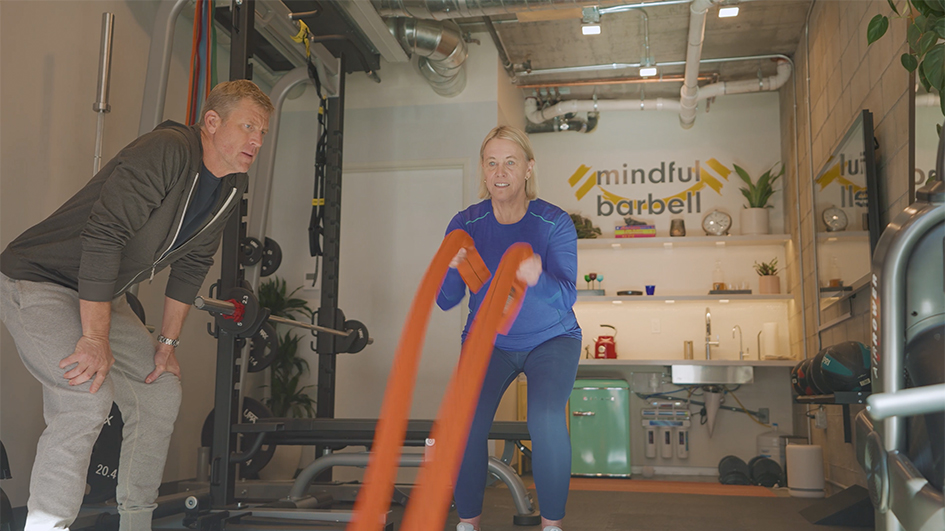 During our visit with Jon, we had the chance to meet with some of his satisfied clients at Mindful Barbell. They reported that one of the greatest advantages of the Flex system is that it is fun to use. This results in much greater engagement and improved experiences for Jon’s clients, which translates directly into increased strength both of mind and of body. For older clients, this can be a valuable tool in improving and preserving their fitness and cognitive skills.
During our visit with Jon, we had the chance to meet with some of his satisfied clients at Mindful Barbell. They reported that one of the greatest advantages of the Flex system is that it is fun to use. This results in much greater engagement and improved experiences for Jon’s clients, which translates directly into increased strength both of mind and of body. For older clients, this can be a valuable tool in improving and preserving their fitness and cognitive skills.